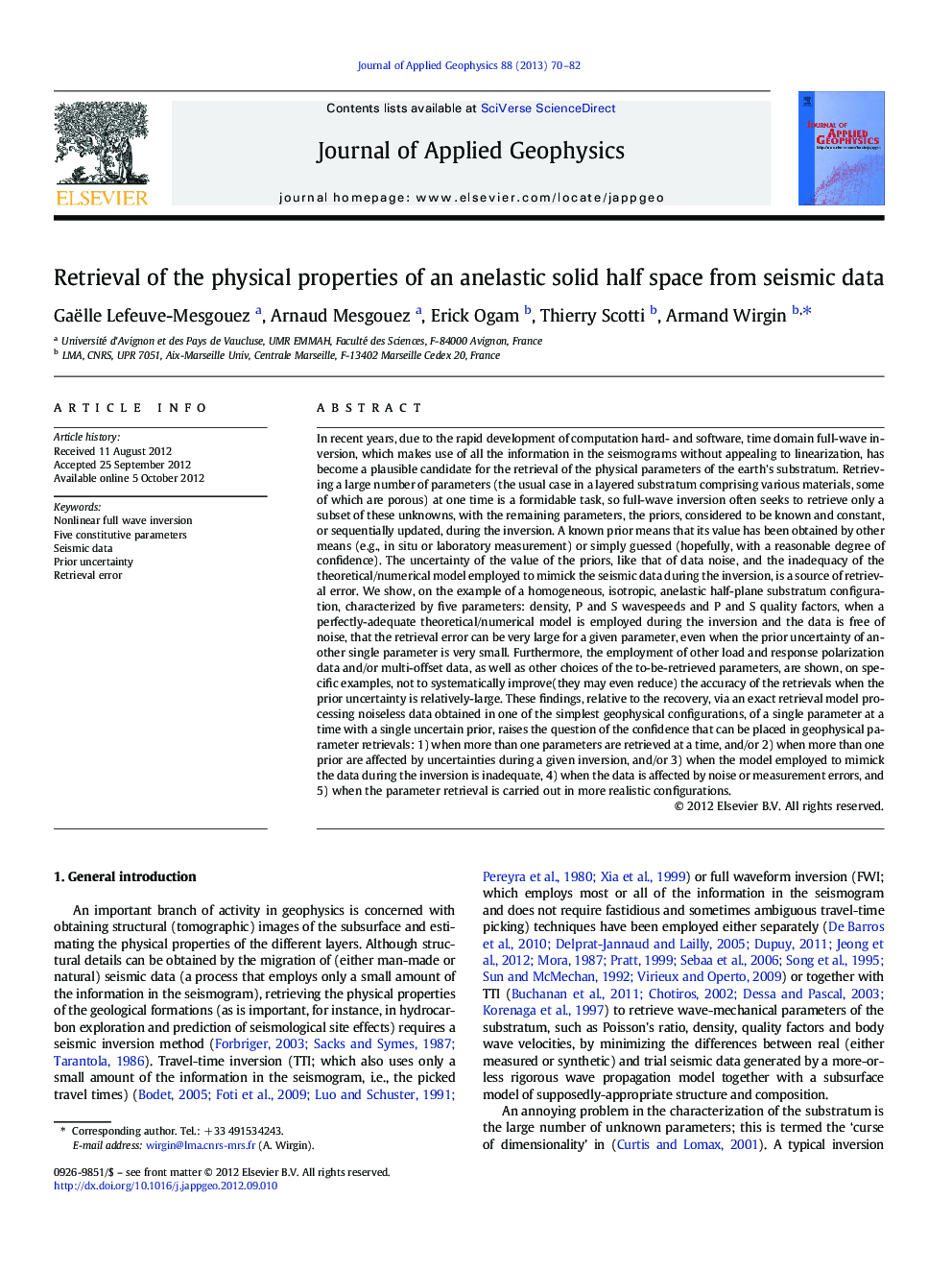| کد مقاله | کد نشریه | سال انتشار | مقاله انگلیسی | نسخه تمام متن |
|---|---|---|---|---|
| 4740477 | 1641163 | 2013 | 13 صفحه PDF | دانلود رایگان |
In recent years, due to the rapid development of computation hard- and software, time domain full-wave inversion, which makes use of all the information in the seismograms without appealing to linearization, has become a plausible candidate for the retrieval of the physical parameters of the earth's substratum. Retrieving a large number of parameters (the usual case in a layered substratum comprising various materials, some of which are porous) at one time is a formidable task, so full-wave inversion often seeks to retrieve only a subset of these unknowns, with the remaining parameters, the priors, considered to be known and constant, or sequentially updated, during the inversion. A known prior means that its value has been obtained by other means (e.g., in situ or laboratory measurement) or simply guessed (hopefully, with a reasonable degree of confidence). The uncertainty of the value of the priors, like that of data noise, and the inadequacy of the theoretical/numerical model employed to mimick the seismic data during the inversion, is a source of retrieval error. We show, on the example of a homogeneous, isotropic, anelastic half-plane substratum configuration, characterized by five parameters: density, P and S wavespeeds and P and S quality factors, when a perfectly-adequate theoretical/numerical model is employed during the inversion and the data is free of noise, that the retrieval error can be very large for a given parameter, even when the prior uncertainty of another single parameter is very small. Furthermore, the employment of other load and response polarization data and/or multi-offset data, as well as other choices of the to-be-retrieved parameters, are shown, on specific examples, not to systematically improve(they may even reduce) the accuracy of the retrievals when the prior uncertainty is relatively-large. These findings, relative to the recovery, via an exact retrieval model processing noiseless data obtained in one of the simplest geophysical configurations, of a single parameter at a time with a single uncertain prior, raises the question of the confidence that can be placed in geophysical parameter retrievals: 1) when more than one parameters are retrieved at a time, and/or 2) when more than one prior are affected by uncertainties during a given inversion, and/or 3) when the model employed to mimick the data during the inversion is inadequate, 4) when the data is affected by noise or measurement errors, and 5) when the parameter retrieval is carried out in more realistic configurations.
► A homogeneous half space earth is submitted to dynamic loads on its boundary.
► The response signals on the ground constitutes the data for parameter retrieval.
► Full-wave inversion enables to retrieve five constitutive parameters individually.
► We admit various degrees of uncertainty on one prior during each inversion.
► This results in an error of the retrieval, evaluated for various uncertainties.
Journal: Journal of Applied Geophysics - Volume 88, January 2013, Pages 70–82
